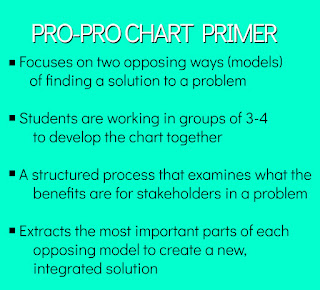The Case for Innovation
Matt and I dove headfirst into this pilot project. We had goals; highlight innovative practices in education; get more people sharing what they do; publish our observations. We had a vision on how to share; blogging, videos, podcasts. We knew these things would take time to establish.
What we didn’t have was a clear idea about what innovation is. Thankfully, we had experts we could rely on. Cindy Cosentino, IPL of Science for the Halton District School Board, provided us with a great foundation of what it means to be an innovative person. Add to that our participation in the Innovator's Mindset online course and we were ready to roll!
So here is what we’ve come to understand about Innovation:
1) Innovation is a process that improves something
Let’s be clear on this, if something is labelled “Innovation” but it isn’t improving something, it isn’t innovative. Innovation is needed to improve products by making them more efficient, or compact, or aesthetically pleasing. Innovation drives improvements to processes that make them more inclusive, or less hazardous, or more sustainable in the long term. Innovation increases understanding by making it more precise or deeper. Trying something new and different that doesn’t result in an overall improvement is just extra noise. If we want to be innovative educators who in turn raise innovative students, we need to make sure the ideas we try with our classes are targeted specifically to make improvements. Teaching with an Interactive Whiteboard is not innovative, but having a Smart Board available for students to work on might be…
2) Innovation requires a specific set of skills
It takes a special person to look at a classroom or school and say “If I try this, I bet I can improve that”. These leaders possess skills that not everyone has. They question the common wisdom, asking questions like “What would happen if we tried this…?”. They experiment and tinker; intellectually and physically. They pay attention and are able to notice everything. They network and look for knowledge everywhere. Finally, and this is the biggest one, they are able to associate unrelated questions, ideas and problems in a way that drives their innovation.
3) Teaching innovation needs to be done in a specific environment
 | |
|
Teaching students to be successful in the 21st Century requires teaching them the skills identified above. This won’t happen on its own, rather it will require learning in a classroom that has a specific environment. The classroom must be one that is safe and inclusive. Students must be encouraged to try and fail and then learn from their mistakes. Risk taking is the norm as it promotes self reflection. Problems posed in this classroom are authentic and promote inquiry. The learning uses technology as the tool to drive deeper experiences. Finally, the classroom (and teacher) is grounded in the course content, but not driven by curriculum. Oddly enough, these same conditions should be what educators experience in their workplace. The learning conditions for good student development are the same as the conditions for good teacher development.
4) Innovation demands creativity
 | |
|
Finally, to allow innovation to thrive we must answer three questions; what, why and how? What refers to the expertise we bring to the classroom. Teachers need to know their stuff and to ensure that students know it too. This can be driven through the why; what is the purpose of the learning, how does it engage the students? How can we do this? Be engaging with our students critical and creative thinking skills. If educators can address the what, why and how of teaching, they we will create the creative students who will be successful in the 21st century.
Still unsure about what innovation is?
Find a problem, adjust to try and solve that problem. That’s innovation. It isn’t a huge thing and it’s probably easier than you thought.
So without further ado, here is our Case For Innovation.




Comments
Post a Comment